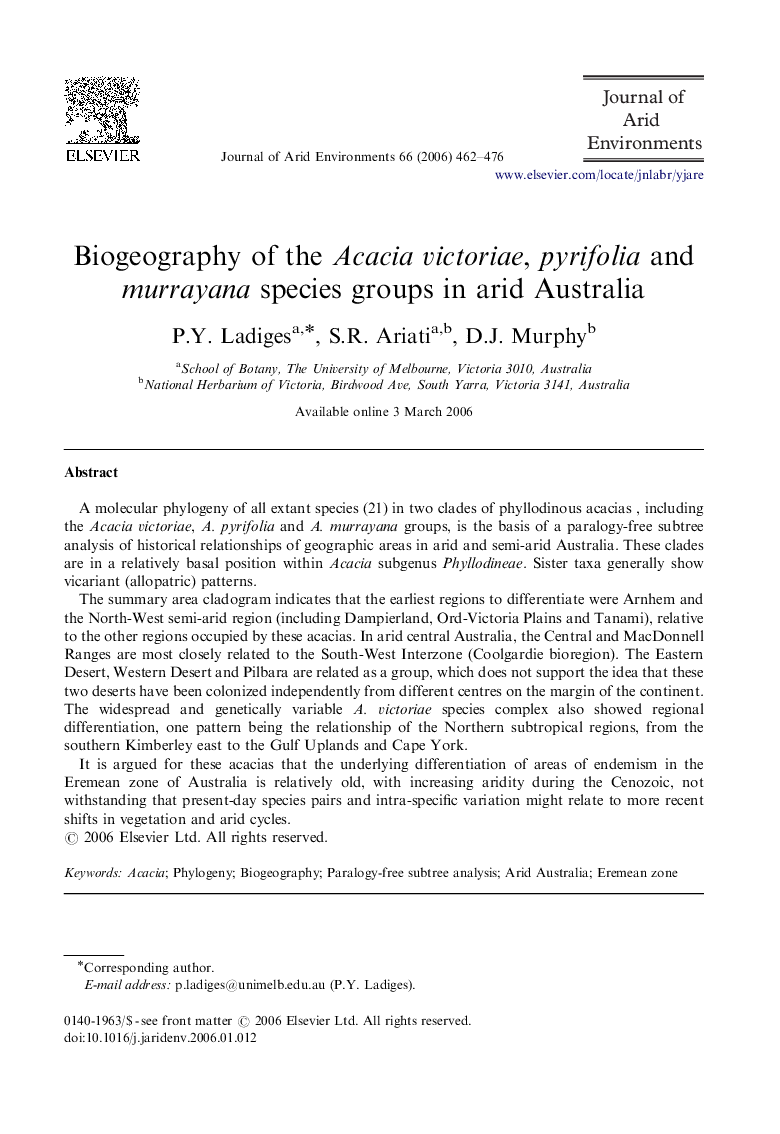| کد مقاله | کد نشریه | سال انتشار | مقاله انگلیسی | نسخه تمام متن |
|---|---|---|---|---|
| 4394562 | 1305544 | 2006 | 15 صفحه PDF | دانلود رایگان |

A molecular phylogeny of all extant species (21) in two clades of phyllodinous acacias , including the Acacia victoriae, A. pyrifolia and A. murrayana groups, is the basis of a paralogy-free subtree analysis of historical relationships of geographic areas in arid and semi-arid Australia. These clades are in a relatively basal position within Acacia subgenus Phyllodineae. Sister taxa generally show vicariant (allopatric) patterns.The summary area cladogram indicates that the earliest regions to differentiate were Arnhem and the North-West semi-arid region (including Dampierland, Ord-Victoria Plains and Tanami), relative to the other regions occupied by these acacias. In arid central Australia, the Central and MacDonnell Ranges are most closely related to the South-West Interzone (Coolgardie bioregion). The Eastern Desert, Western Desert and Pilbara are related as a group, which does not support the idea that these two deserts have been colonized independently from different centres on the margin of the continent. The widespread and genetically variable A. victoriae species complex also showed regional differentiation, one pattern being the relationship of the Northern subtropical regions, from the southern Kimberley east to the Gulf Uplands and Cape York.It is argued for these acacias that the underlying differentiation of areas of endemism in the Eremean zone of Australia is relatively old, with increasing aridity during the Cenozoic, not withstanding that present-day species pairs and intra-specific variation might relate to more recent shifts in vegetation and arid cycles.
Journal: Journal of Arid Environments - Volume 66, Issue 3, August 2006, Pages 462–476